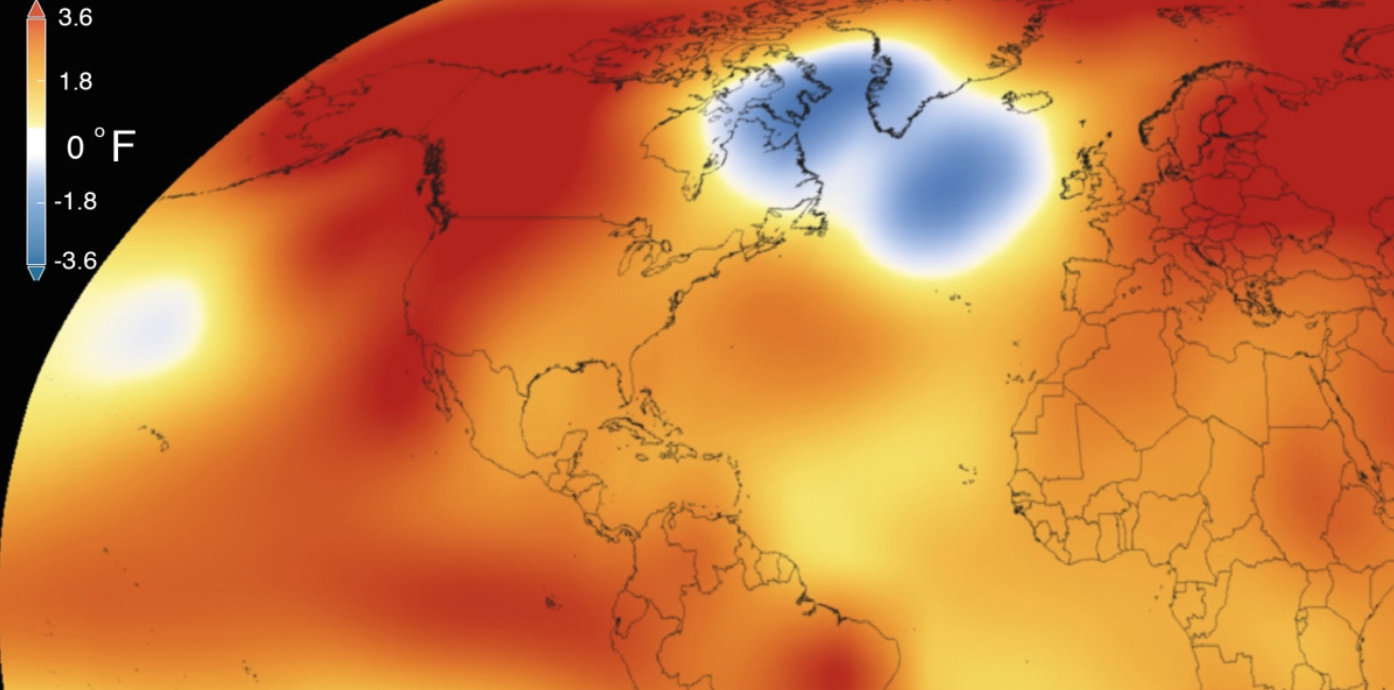Compliance and the Paris Climate Deal: How To Ensure Nations Keep Their Promises

by KENT KELLER
Last December, 195 nations adopted the Paris climate agreement, a UN treaty that many are hailing as the turning point for global efforts to address the threat of climate change. The agreement acts as a framework in which nations pledge to reduce or curtail their greenhouse emissions and provide funding to prepare for the future effects of climate change, like drought and sea level rises, with the ultimate goal of limiting warming to 1.5 degrees Celsius by the year 2100. Unlike previous international agreements, all of the world’s major emitters (China, the United States, the European Union, India, Russia, and Brazil) adopted the agreement[1]. The international community has never been more united and committed to dealing with climate change than ever before. Nearly 175 out of the 195 countries have signed on to the agreement since it was adopted and the agreement is expected to be fully ratified by the end of the year[2].
However, questions remain, and the future of the deal relies on the full compliance of the countries that adopted the agreement. Without robust accountability and transparency measures that deal will likely collapse and the world’s greatest opportunity to confront climate change will be lost. In this article, I will examine the pressures countries face to comply, how the agreement seeks to ensure compliance, and measures that could be taken to strengthen it.
Every country that adopted the agreement made a pledge to reduce or at least limit greenhouse gas emissions by a certain date. The exact deadline and amount of emission reduction required of each signatory vary based on the country’s level of economic development and other individual circumstances. For instance, the United States, as a developed nation, pledged to reduce its emissions 28% by 2025, while China, a developing nation, pledged that its emissions would peak by 2030 and decrease from there[3].
All of these pledges are completely voluntary. The agreement itself is non-binding, meaning that if nations fail to comply with the agreement and do not meet their pledges, they will not face any form of legal sanctions, such as fines. In short, there are no penalties for non-compliance. It was necessary to make the agreement and the nations’ pledges nonbinding in order to ensure that the world’s largest emitters signed on to the agreement. Previous deals, like 2010 Copenhagen Summit, failed to result in any meaningful progress because many countries, such as China, would not accept a binding agreement[4]. How then can the international community ensure that countries are fulfilling their pledges if the agreement is non-binding?
Much of the deal’s heft wrests on the strength of international norms. The consequences a country must face for reneging on their commitments may not include formal penalties, but noncompliance could seriously undermine a country’s international standing and credibility. Maintaining strong relationships with other countries is in the best interests of the signatories. Going back on their promise has the potential to damage a country’s relationship with the rest of the international community and will make efforts to negotiate with other nations on other salient issues more difficult. Additionally, many governments will face a backlash from environmentally minded civil society groups, as well as their own citizenry more broadly, if they fail to meet their commitments. In short, the legitimacy of national governments, both in the eyes of the international community and their own citizens, will suffer if their pledges are not kept. Lastly, climate change has become widely recognized as a major threat to global stability and prosperity. Most nations recognize that something must be done to address it. If nations do not meet their pledges than then other nations will have less of an incentive to meet their own pledges, and their agreement could gradually unravel. Given the severity of the threat posed by climate change, most nations have a strong interest in addressing it. However, although nations recognize it is in their interests to address climate change, there will always be the temptation to renege on their commitments if they find them less politically or economically expedient in the future. Without a robust implementation of the agreement the chances of successfully addressing it will greatly diminish.
One way to ensure that nations are subject to these informal mechanisms of enforcing compliance is to maximizing transparency and promoting accountability. The agreement itself has relatively robust rules to establish transparency and accountability. This aspect is one part of the agreement that is legally binding. Countries are required to release an accurate and comprehensive set of data, performance review, and independent reviews every two years to a compliance committee. Countries are also required to meet to every five years, starting in the year 2018, to review their pledges and are also required to meet every five years to renew their pledges, starting in 2020. The former act as “stocktakes” whereby countries evaluate their pledges, the progress they have made so far, and examine which strategies has been effective and ineffective. The last step is designed to encourage countries to ratchet up their commitments based upon the progress they have made so far and adjust their commitments based upon the stocktakes that were conducted[5].
Although a basic framework has been established, the details are still being worked out. Countries will meet again in 2018 to finalize the transparency and accountability measures, leaving room to strengthen some of the aforementioned compliance measures. For instance, a rule could be instituted whereby if a country suspects another country of failing to meet its commitments another country could force a review to occur in addition to the ones already established under the agreement. A greater emphasis could be placed on independent review by granting non-governmental organizations a larger role in the review process. Separate committees comprised of such organizations could be set up to supplement the role of formally established compliance committees, which would help improve the accuracy of performance reviews. Requiring countries to publish their data in a format that is accessible to the general public would also enhance transparency[6]. Strengthening existing transparency and accountability measures will be crucial to ensure the success of the agreement, especially given that sanctions and other penalties cannot be applied.
The Paris Climate Agreement marks a major step forward in the world’s efforts to address climate change. It is the first time that the majority of the global community has agreed on a robust series of commitments to tackle the problem. However, the agreement’s success hinges on the strength of international norms against noncompliance, the efficacy of existing transparency and accountability measures, and the enhancement of these measures going forward. The agreement’s adoption is only the first step in a multi-decade battle against one of the greatest challenges of our time.
[1] Stephanie Meyer, “A Reader’s Guide to the Paris Agreement.” The Atlantic, Dec 16, 2015, accessed May 15, 2016.
http://www.theatlantic.com/science/archive/2015/12/a-readers-guide-to-the-paris-agreement/420345/
[2] Matt McGrath, “Nations Sign Historic Paris Climate Deal” BBC World News, April 22, 2016, accessed May 17, 2016.
http://www.bbc.com/news/science-environment-36108194
[3] Corak Davenport, “Key Players in Climate Change” NY Times, April 21, 2016.
accessed May 16, 2016.
http://www.nytimes.com/interactive/2016/04/21/science/paris-agreement-carbon-dioxide-global-
[4] Bruce Jones and Adele Morris, December 14, 2015 (4:00pm), “Beyond the Paris Agreement: COP21 shouldn’t be a milestone, but rather a launching pad for a new phase of climate action” Planet Policy accessed May 16, 2016
[5] Simone Evans and Sophie Yeo, “Analysis the Final Paris Climate Agreement.” CarbonAnalysis, Dec 12, 2015, accessed May 17, 2016.
http://www.carbonbrief.org/analysis-the-final-paris-climate-deal
[6] Celine Herweijer, “A Climate Deal That Counts: How Compliance Could Evolve in the New Deal”, Huffington Post, April 18, 2016, accessed May 20, 2016.
http://www.huffingtonpost.com/celine-herweijer/a-climate-deal-that-count_b_9715726.html
Bibliography:
Stephanie Meyer, “A Reader’s Guide to the Paris Agreement.” The Atlantic, Dec 16, 2015, accessed May 15, 2016.
http://www.theatlantic.com/science/archive/2015/12/a-readers-guide-to-the-paris-agreement/420345/
Simone Evans and Sophie Yeo, “Analysis the Final Paris Climate Agreement.” CarbonAnalysis, Dec 12, 2015, accessed May 17, 2016.
http://www.carbonbrief.org/analysis-the-final-paris-climate-deal
Matt McGrath, “Nations Sign Historic Paris Climate Deal” BBC World News, April 22, 2016, accessed May 17, 2016.
http://www.bbc.com/news/science-environment-36108194
Corak Davenport, “Key Players in Climate Change” NY Times, April 21, 2016.
accessed May 16, 2016.
http://www.nytimes.com/interactive/2016/04/21/science/paris-agreement-carbon-dioxide-global-
Celine Herweijer, “A Climate Deal That Counts: How Compliance Could Evolve in the New Deal”, Huffington Post, April 18, 2016, accessed May 20, 2016.
http://www.huffingtonpost.com/celine-herweijer/a-climate-deal-that-count_b_9715726.html
Bruce Jones and Adele Morris, December 14, 2015 (4:00pm), “Beyond the Paris Agreement: COP21 shouldn’t be a milestone, but rather a launching pad for a new phase of climate action” Planet Policy accessed May 16, 2016
Photo: NASA





